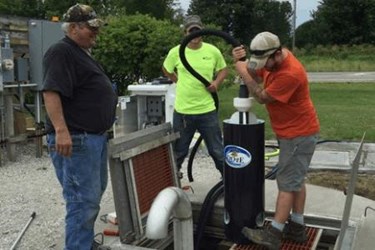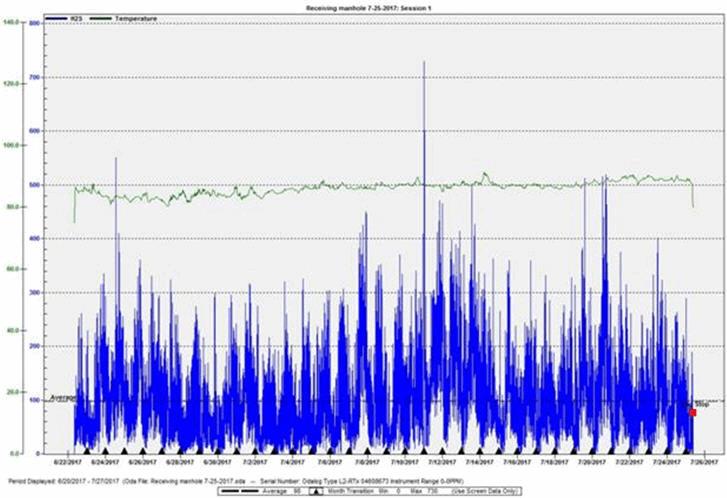Easy To Digest: H2S Removal Rids City Of Lift Station Odors
By Richard Wiseman, Street & Sewer Superintendent, City of Taylorville

A constant problem in many wastewater collection systems is the formation of hydrogen sulfide (H2S) in the lift stations as well as from biofilms further downstream in the delivery piping to the wastewater treatment plant. DO2E representatives suggested that the City of Taylorville (IL) use their proprietary digesters equipped with an ozone (O3) capability to remove this problem from our system.
Hydrogen sulfide formation is a real nightmare to deal with as it is quite toxic, smells absolutely horrible, and results in the formation of sulfuric acid (or hydrosulfuric acid) which, in turn, pits concrete pipes and corrodes metal fixtures and collection pipes. It is, therefore, most desirable to remove it (and neutralize its effects) as quickly and as cheaply as possible.
To that end, in June 2016, the City of Taylorville Street & Sewer Department decided to purchase three Little John Digesters from DO2E to address and alleviate this problem as we had high levels of H2S at three lift stations. The discharge manhole readings were over 700 ppm (mg/L) and the local residents were complaining of the terrible odors.
After the first months of running the digesters with ozone, there was a significant change in the level of the H2S gas for all three lift stations. At this time (after the first month), the average levels were 42 ppm (mg/L); there was a single spike at 220 ppm (mg/L) in comparison to previous levels of average values of 474 ppm (mg/L) with numerous spikes of over 730 ppm (mg/L).

Between January and February 2017, another lift station began having similar odors; the local residents were becoming ill because of them. The City of Taylorville Street & Sewer Department decided to contact Randy McGuffin, the owner of DO2E, and have him review the Odor Log Reports. After scrutinizing the Odor Logs, he recommended an additional Little John Digester unit to handle the job. Once the unit was installed, it took only two days and the odors were gone. These particular H2S gas readings are averaging 1 ppm (mg/L) with a single spike of 124 ppm (mg/L).

The digesters have made a tremendous difference, not only in odor (H2S) control, but also in both heavy matting and FOG (fats, oils, and grease) removal. It has been over a year since we installed the first three digesters with ozone. The heavy FOG deposits and matting were gone in less than 24 hours after these installations and have never reformed in the stations or down the collection lines — performing beyond our expectations. Local residents can once again enjoy their neighborhoods; we have received no complaints since the Little John Digesters were installed.
